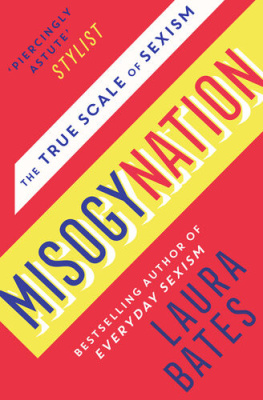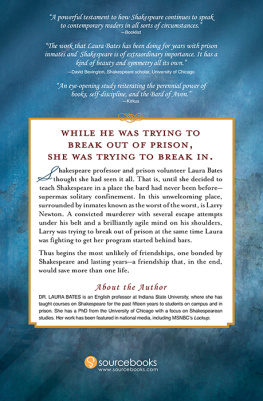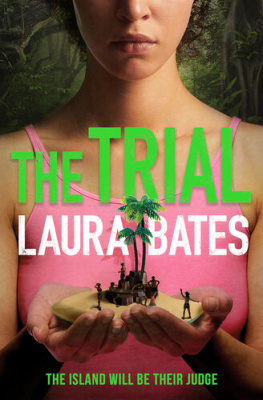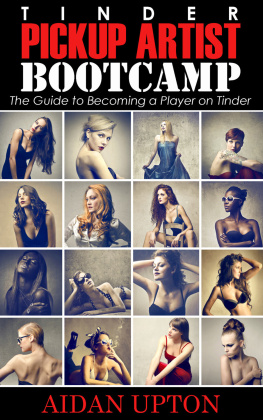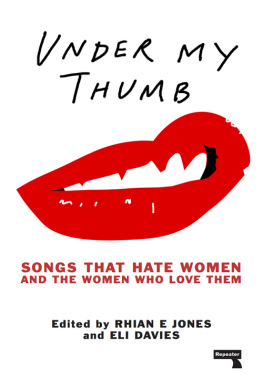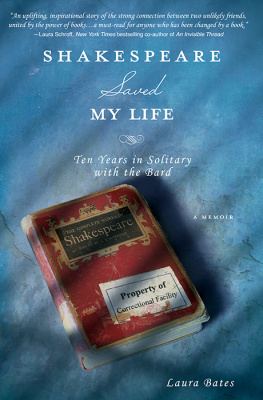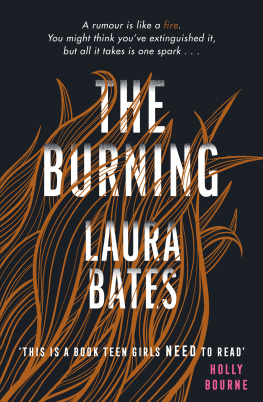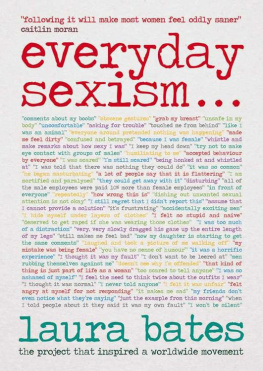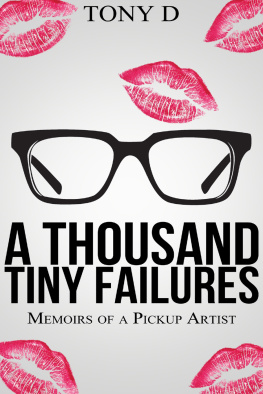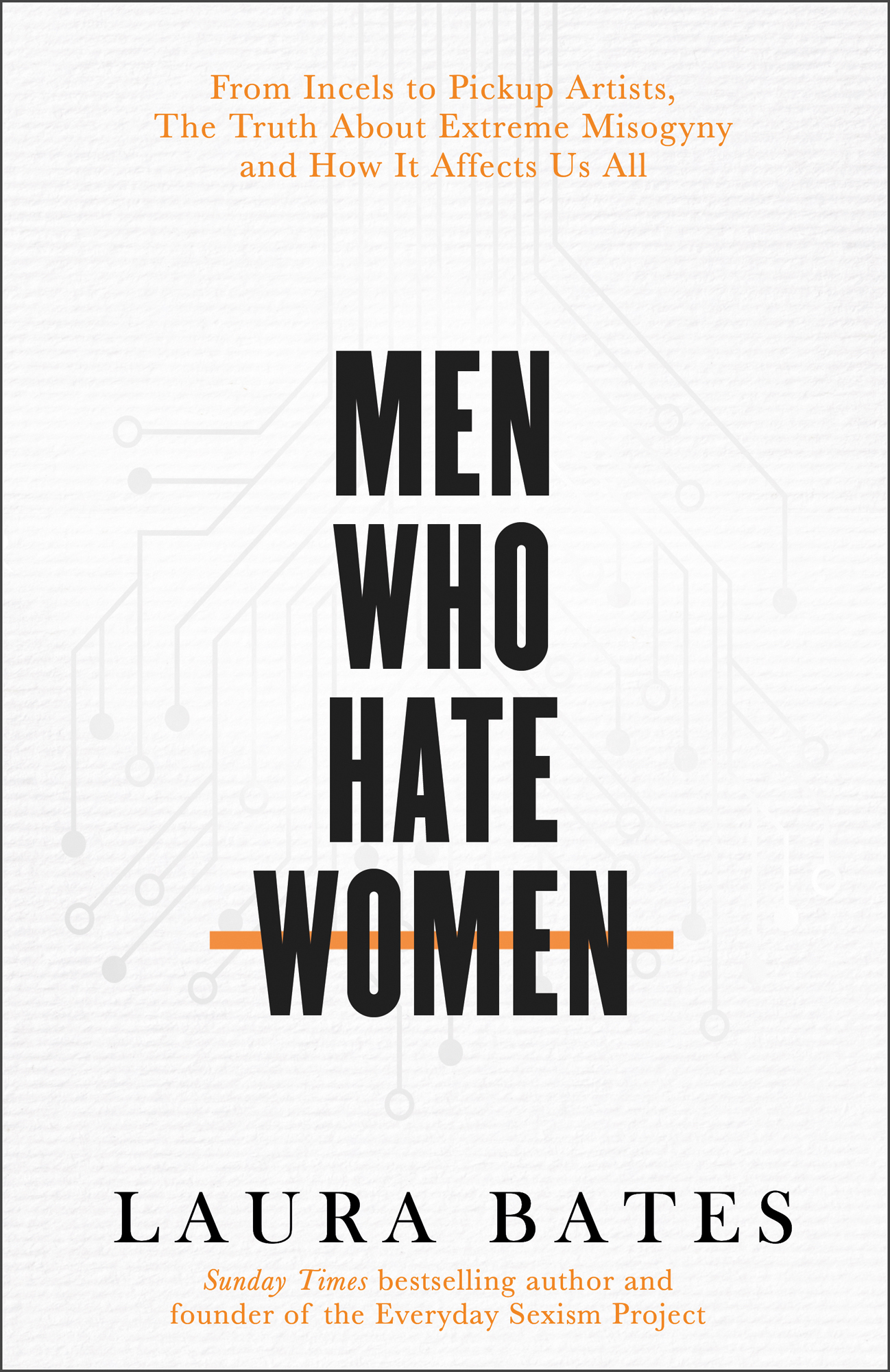Contents
Guide
Praise for Everyday Sexism:
A pioneering analysis of modern-day misogyny. Daily Telegraph
[An] extremely powerful book that could, and should, win hearts and minds right across the spectrum. Financial Times
A game-changing book, a must-read for every woman. Cosmopolitan
Admirable and culturally transferable. A storm is coming, writes Bates. After reading this book, youll hope so. The Independent
If Caitlin Morans How to Be a Woman is the fun-filled manual for female survival in the twenty-first century, Everyday Sexism is its more politicised sister. Independent on Sunday
Praise for Laura Bates:
Laura Bates has given women of every age a frank guide to standing up for ourselves and each other. Gloria Steinem
Mature, eloquent and passionate, Bates is, in many ways, the voice of her generation. HuffPost
Following [Everyday Sexism on Twitter] will make most women feel oddly saner. Caitlin Moran
We owe Bates a great debt of gratitude for her Everyday Sexism Project. LA Times
Laura was one of the first women to harness the power of social media to fight sexism and misogyny, and give millions of young women a voice. Grazia
[Girl Up is] another hard-hitting book, which exposes the truth surrounding pressures on body image, false representations in the media, and lots of issues very relevant to girls today. Red
ALSO BY LAURA BATES
Everyday Sexism
Girl Up
Misogynation
The Burning
First published in Great Britain by Simon & Schuster UK Ltd, 2020
Copyright Laura Bates, 2020
The right of Laura Bates to be identified as the author of this work has been asserted in accordance with the Copyright, Designs and Patents Act, 1988.
Simon & Schuster UK Ltd
1st Floor
222 Grays Inn Road
London WC1X 8HB
www.simonandschuster.co.uk
www.simonandschuster.com.au
www.simonandschuster.co.in
Simon & Schuster Australia, Sydney
Simon & Schuster India, New Delhi
The author and publishers have made all reasonable efforts to contact copyright-holders for permission, and apologise for any omissions or errors in the form of credits given. Corrections may be made to future printings.
A CIP catalogue record for this book is available from the British Library.
Hardback ISBN: 978-1-4711-9433-7
Trade Paperback ISBN: 978-1-4711-5226-9
eBook ISBN: 978-1-4711- 5227-6
For Nick, without whom none of this would have been possible.
INTRODUCTION
Imagine a world in which tens of thousands of women are raped, beaten, mutilated, abused or murdered every year, because of the simple fact that they are women. Imagine a world in which the hatred of women is actively encouraged, with sprawling, purpose-built communities of men dedicated to fuelling and inflaming the cause. Imagine a world in which such hatred blends seamlessly with racist rage: whores blamed for contaminating superior bloodlines; invading savages, conjured from hate-fuelled imaginations, framed as plunderers of the dehumanised commodity of fragile, white women. Imagine a world in which thousands of men band together, united by a common code of vitriolic rage, demonising and railing against evil, soulless, greedy women, graphically plotting their rape and destruction in a glorious, bigoted uprising. Imagine a world in which some men actually enact such fantasies, killing women in mass murders, leaving behind manifestos explaining the ideology that drove them to commit these acts of terrorism. Imagine a world in which vulnerable men, lost boys and confused, scared teenagers are swept up and preyed upon by such communities, which feed on their fears and push them towards hatred, violence and self-destruction.
You dont have to imagine that world you already live in it. But perhaps you didnt know, because we dont like to talk about it.
We dont like to risk offending men. We find it hard to think of straight, white men as a homogenous group, though it comes so easily when we think of other types of people, because we are used to affording such men the privilege of discrete identities. These men are complex, heroic, individual. Their decisions and choices are seen to spring from a set of distinct and unique circumstances, because we see them as distinct and unique people. We dont mind talking about women as a group, and about violence against women as a phenomenon, but we do so as though it is something that just happens. We do not, as a rule, talk about male perpetrators of violence against women. We describe a woman as having been raped; we discuss the rates of women sexually assaulted or beaten. We do not speak in terms of men committing rape or being sexual assaulters and violent abusers. That is what makes it so easy to focus on womens dress, behaviour and choices when we consider sexual violence. To warn women to take precautions to protect themselves and, implicitly or explicitly, blame those victims who do not. Because a rape is a shadowy, dark thing waiting to befall women who walk in alleyways wearing short skirts, not a deliberate, criminal choice made by real men. When we are forced to confront these men, because high-profile cases hit the headlines, we describe them as beasts and monsters, in order to separate them clearly from those other, ordinary, decent men, among whom we walk every day. We do not count them, quantify them or, in any meaningful sense, study them. In fact, we rarely think about them at all.
If we talk about masculinity, patriarchy or male privilege, the conversations are immediately derailed by accusations of generalisation and prejudice. Not all men, rises the ubiquitous cry. It is too simplistic, too offensive, too broad. Yet we raise few such objections when the crimes of a man with brown or black skin are immediately assumed to be related to his race or religion. To speak ill of masculinity to describe it, in its current societal iteration, as something problematic is seen as an attack on men themselves. To question why some men behave in certain ways is viewed as an assault on all men, and thus unacceptable.
Yet the opposite is true. Those who speak of toxic masculinity are not criticising men, but rather defending them: describing an ideology and a system that pressures the boys and men in our societies, in our families, to conform to unrealistic, unhealthy and unsustainable ideals. Crushing gender stereotypes are damaging to men as individuals, as well as to the society in which they live. Tackling this problem, dismantling these pressures, is a matter of life and death for our boys. They are toppling like dominoes into the chasm we leave behind when we tiptoe around and refuse to name the problem.
But we dont like to offend men. So we dont mention it. We do not use the word terrorism when describing a crime of mass murder committed by a white man with the explicit intention of creating terror and spreading hatred against a specific demographic group even though that is the definition of terrorism if the demographic in question is women. The man is just disturbed, deranged, a lone wolf. We use language that designates him an outlier, an aberration. We do not call his online journey a radicalisation or use the word extremism to label the online communities in which he has immersed himself, though we would reach for those words in an instant when describing other, similar types of crimes, committed by other, different types of men. We do not examine what led him to commit those acts or how he became so full of hate.

